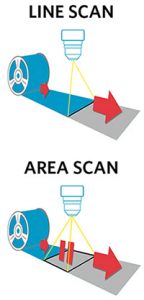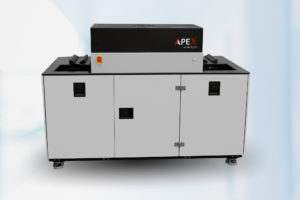From the Summer Issue of the NIRMA Online Magazine
As Record Managers, you are very familiar that records come in all types of formats, sizes, densities, colors, and more. And while most are now created with a digital backup, there are still many documents on old analog file types.
For the last two decades, the team of nextScan has been developing the world’s most advanced scanning systems for micrographics. But did you know the company’s history of imaging goes back over half a century? Digital Check, nextScan’s parent company, has been in the check imaging industry for the past 25 years and was born from a company called Microseal. That company, founded in the 1950s, would revolutionize the way micro-documents were stored, from aperture cards, to film, to fiche, jackets and more.
 This experience with so many different file types has created the environment for engineers to develop different solutions for the different scanning challenges. For example, Digital Check check scanners use a Contact Image Sensor (CIS) to scan checks and other bank notes. On the other hand, nextScan uses line scan cameras to capture microfilm and microfiche at high speeds. And finally, our ST Imaging line of microfilm scanners us an area image sensor to capture images on at a time. As you can see there are several different ways for images to be captured. When approached with a new challenge, we sometimes need to develop a new technique.
This experience with so many different file types has created the environment for engineers to develop different solutions for the different scanning challenges. For example, Digital Check check scanners use a Contact Image Sensor (CIS) to scan checks and other bank notes. On the other hand, nextScan uses line scan cameras to capture microfilm and microfiche at high speeds. And finally, our ST Imaging line of microfilm scanners us an area image sensor to capture images on at a time. As you can see there are several different ways for images to be captured. When approached with a new challenge, we sometimes need to develop a new technique.
A few years back, a United States government agency approached nextScan with their problem. They needed to scan their archive of aerial film, which was up to 10+ inches wide and hundreds of feet long, with the goal of completion by 2030. Their previous solution was to scan one section at a time and then stich the images together. That technology is over 20 years old and was severely limited to the digital storage technology of the era. With the time it took to scan each roll by individually stitching the images together, there was no chance of completing their mission.
The team at nextScan really enjoys a challenge and this was a big one! To continuously scan a roll of 10.23” film, to a 4-micron resolution, and capable of storing all that data. Kurt Breish, lead engineer and nextScan founder, said, “There are two types of cameras in our line of work: an area array sensor, which takes pictures like a normal camera that you or I would use at home; and a line-scan sensor, which continually captures single-pixel ‘slices’ of whatever is moving past it. From our past work with microfilm, we knew that line-scan was the superior way of digitally capturing roll film, not only because of its speed, but because it was continuous – you weren’t left needing to line up the edge of one picture you took with the start of the next.”
With the scanning part taken care of, the nextScan team focused on how we store this massive amount of data. Thankfully with today’s technology there are solutions that were not available even a decade ago. For example, the scanner uses a 25-gigabit Ethernet cable developed in 2015. And we still have to factor in data storage. With the amount of information being generated a new configuration of 24 drives in a RAID-4 array would allow for the capture in real time.
We call our creation Apex. Capable of high-speed, wide-format scanning of film up to 10.23” in width. The government agency has received four of their seven scanners, which will be installed before the end of the summer.

If you are having trouble with a particular type of film, there is a good chance a colleague of yours is experiencing it as well. Over the next month, take an inventory of any odd formats you work with. We welcome you to bring your challenges to us next month as we will have Rich Chaney, Vice President and General Manager of nextScan, speaking about the different file types that nextScan has been challenged with scanning and how our expertise may be able to help you.
